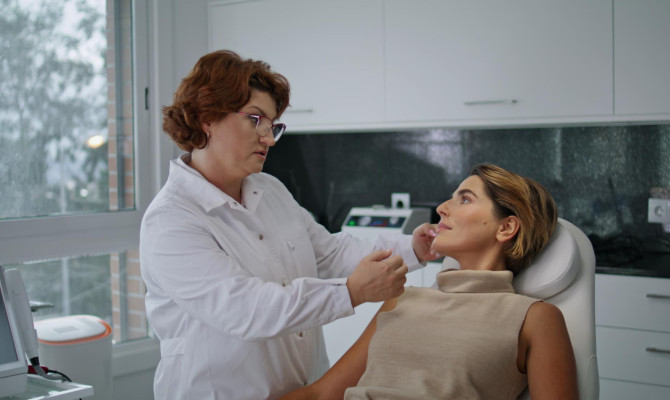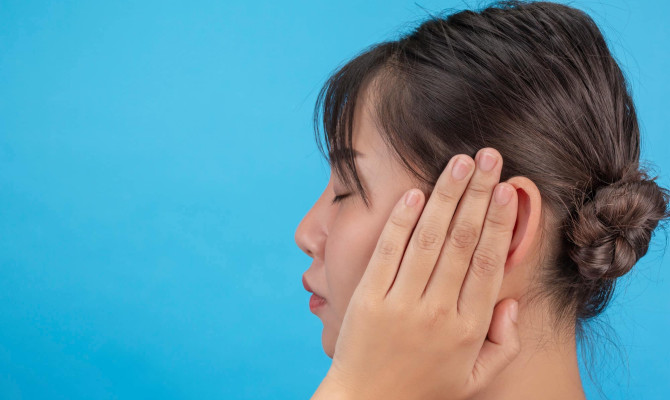Carpal tunnel syndrome: Causes, Symptoms and Management

- Carpal tunnel syndrome
- 22 Aug 2023
Overview
About Carpal tunnel syndrome
The hand and wrist are both affected by the medical disorder carpal tunnel syndrome. The median nerve, which runs from the forearm to the hand, becomes pinched or squeezed when it passes through the carpal tunnel, a small aperture, and this causes the condition.1Overview| Researched based study from Nlm.nih.gov
This potentially debilitating disease has an impact on millions of individuals worldwide.
We delve into its complexities in this article, looking at its causes, symptoms, and available treatments.

Symptoms
What are the symptoms?
Various symptoms, usually affecting the hand and wrist, can be present. Here are some typical examples linked to:
- Numbness and tingling
- Pain and discomfort
- Weakness and muscle atrophy
- Difficulty with fine motor skills
- Sensation changes
Numbness
- One of the condition’s early and most prevalent symptoms is a sensation of numbness or tingling in the thumb, index finger, middle finger, and part of the ring finger.
- The wrist or palm may also experience this sensation. People say it feels like an electric shock or pins and needles.
Discomfort and pain
- The hand, wrist, or forearm may experience aches or pains. The degree of the pain might change, and it can be either intermittent or chronic.
- The discomfort may become more severe at night or while engaging in repeated hand motions or extended wrist flexion.
Weakness and muscle atrophy
- As it worsens, the affected hand may show signs of weakening. Holding objects or carrying out tasks requiring fine motor skills may become problematic when grip strength declines.
- The muscles of the thumbs may occasionally atrophy or decrease.
Difficulty with fine motor skills
- It may obstruct your coordination and agility. It could become more difficult to perform tasks requiring precise motions, such as buttoning clothing, securing jewelry, or handling small objects.
- People may feel awkward or uncontrollable when using the affected hand.
Radiating pain
- Beyond the hand and wrist, the pain could spread.
- The discomfort is caused by the carpal tunnel’s compression of the nerves, and it may extend into the shoulder or up the arm into the elbow.
Sensation changes
- The sensation can shift for some folks. For instance, they might observe that the affected area is less sensitive to touch or warmth.
- Some people may express a feeling of fullness or swelling in the fingers even when there is no obvious swelling.1Symptoms| Researched based study from Nlm.nih.gov ,2Symptoms| Researched based study from Nlm.nih.gov ,3Symptoms| Researched based study from Nlm.nih.gov ,4Symptoms| Researched based study from Nlm.nih.gov
Causes
What are the causes of Carpal tunnel syndrome?
Several contributory causes may result in the median nerve being compressed. Some typical causes and risk factors include the following:
Repetitive hand and wrist movements
- Activities that call for unpredictable, violent hand and wrist movement can play a role.
- Continuous actions can strain the tendons and raise the pressure, such as keyboarding, computer mouse use, assembly line labor, playing musical instruments, or participating in sports that require repetitive hand motions.
Wrist positioning and ergonomics
- Long-term and incorrect wrist placement can be a factor. This can happen when the wrist is repeatedly bent or extended, such as when using keyboards that are not well-designed or computer settings that do not offer adequate wrist support.
Anatomical factors
- A smaller carpal tunnel can increase the chance of nerve compression in some persons.
- Congenital predispositions can restrict the room inside the tunnel and impose pressure on the nerve, such as a narrow wrist or an exceptionally thick transverse ligament.
Hormone changes
- Changes in hormone levels during pregnancy, menopause, or with specific illnesses connected to hormones can increase the likelihood of this happening, especially in women.
Medical conditions
- Some underlying medical issues may have a role. These include kidney failure, hypothyroidism, obesity, diabetes, and rheumatoid arthritis.
- These enhance the risk of nerve compression by causing fluid retention, inflammation, or illnesses connected to the nerves.
Injury or trauma
- Swelling and inflammation can be brought on by wrist injuries such as fractures, sprains, or dislocations.
Genetic predisposition
- There is evidence that some people may have a genetic predisposition to carpal tunnel syndrome. The probability of getting the illness may be increased by particular genes or family history.1Causes| Researched based study from Nlm.nih.gov ,2Causes| Researched based study from Nlm.nih.gov ,3Causes| Researched based study from Nlm.nih.gov ,4Causes| Researched based study from Nlm.nih.gov
Diagnosis
Diagnosis of Carpal tunnel syndrome
Medical history
- A thorough medical history that asks about your symptoms, how long they’ve lasted, and any things that might make them worse or better.
- Inquiries about your work, interests, and any prior illnesses or injuries may also be made.
Physical evaluation
- The physician will examine the patient physically to determine the extent of the injury. They could look for swollen, painful, or weak spots in the muscles. They’ll also assess your hand’s grip strength, feeling, and range of motion.
Tinel’s testing
- To check for tingling or shock-like feelings radiating into the hand, this entails lightly tapping or applying pressure to the median nerve in the wrist. A favorable symptom might point to the problem.
Phalen’s test
- You’ll be instructed to bend your wrists and point your fingers downward while pressing the backs of your hands together. This position can cause or exacerbate the symptoms if held for about a minute.
NCS: Nerve conduction studies
- It is a typical diagnostic procedure. It gauges how quickly and strongly electrical signals move through the carpal tunnel and along the nerve.
- Tiny electrical impulses are applied using electrodes placed on the skin. This can determine the severity and extent of the nerve injury.
Electromyogram (EMG)
- It evaluates the electrical activity of muscles and is frequently used in conjunction with NCS. It helps rule out other nerve-related disorders and helps assess whether muscle weakness or atrophy is present.
Imaging studies
- The carpal tunnel, tendons, and surrounding tissues may occasionally be evaluated using imaging procedures like ultrasound and magnetic resonance imaging (MRI). These examinations can aid in locating any anomalies or contributory elements.5Diagnosis| Researched based study from Nlm.nih.gov ,6Diagnosis| Researched based study from Sciencedirect.com
Treatment
Treatment of Carpal tunnel syndrome
The therapy seeks to stop future damage, lessen inflammation, and relieve symptoms. Here are a few typical methods:
Non-operative therapy:
It includes following:
Splinting of the wrist
- Symptoms may be lessened by using a splint or brace that maintains the wrist in a neutral posture. It is frequently advised, especially before bed, and engaging in activities that worsen symptoms.
Lifestyle modifications
- Making ergonomic changes to reduce strain on the wrist and hand can be beneficial. This may involve adjusting the position of your keyboard, using ergonomic tools, taking frequent breaks, and practicing proper wrist posture during daily activities.
Physical therapy
- Physical therapy can offer stretches and exercises to increase the strength and flexibility of the hand, wrist, and forearm. They might also employ manual or ultrasound therapy to treat symptoms and enhance nerve function.
Medications
Medicines helps in alleviating symptom of Carpal tunnel syndrome, for example:
Injection of corticosteroids
- It is immediately injected into the carpal tunnel, and lowering edema and inflammation can offer momentary relief. A medical expert typically administers these injections and may offer momentary symptom alleviation.
Taking painkillers
- Acetaminophen or NSAIDs, available over-the-counter painkillers, can assist in treating mild to moderate pain. They do not, however, deal with the root issue.
Surgical intervention
Carpal tunnel release surgery
- Surgery may be advised in cases when the symptoms are severe or when non-surgical treatments have not sufficiently relieved the symptoms.
- During this procedure, the transverse carpal ligament is severed in order to expand the carpal tunnel. It may be carried out endoscopically or through open surgery.
Recovery following surgery
- After surgery, rehabilitation and hand therapy may be required to restore strength, skill, and range of motion.7Treatment| Researched based study from Nhsinform.scot ,8Treatment| Researched based study from Researchgate.net
Complications

What happens if Carpal tunnel syndrome is not treated?
- Increased discomfort and suffering.
- Functional limitations.
- Muscle deterioration and atrophy.
- Permanent injury to the median nerve.
- Impact on daily activities and employment.
- Decreased hand-eye coordination throughout daily tasks.
- Risk of developing other illnesses, such as hand osteoarthritis.
Any feedback on this article?
 This Articles content was accurate
This Articles content was accurate Very Informative Article
Very Informative Article I have a question or a comment
I have a question or a comment
 This article contains inaccurate content
This article contains inaccurate content This article was not helpful
This article was not helpful I have a question or a comment
I have a question or a comment
We appreciate your helpful feedback!
Checkout our social pages
References
-
National Library of Medicine
Carpal Tunnel Syndrome | Causes | Symptoms
-
National Library of Medicine
Carpal Tunnel Syndrome: A Review of Literature | Causes | Symptoms
-
National Library of Medicine
Carpal Tunnel Syndrome: Pathophysiology and Comprehensive Guidelines for Clinical Evaluation and Treatment | Causes | Symptoms
-
National Library of Medicine
Carpal tunnel syndrome | Causes | Symptoms
-
National Library of Medicine
Diagnosis and Treatment of Carpal Tunnel Syndrome in A Tertiary Care Center in Mexico City | Diagnosis
-
Science Direct
Carpal tunnel syndrome: clinical features, diagnosis, and management | Diagnosis
-
NHSInform
Carpal tunnel syndrome | Treatment
-
Research Gate
Carpal Tunnel Syndrome: Symptoms, Causes and Treatment Options – a Mini Review | Treatment


































